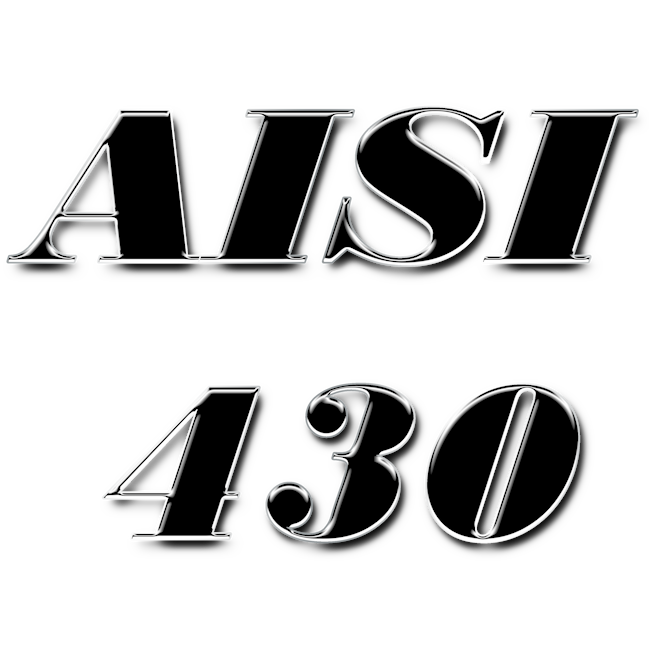AISI 430 | EN 1.4016 | DIN X6Cr17 - is one of many stainless ferritic chromium corrosion-resistant steels that is most widely used. It belongs to the group of general-purpose stainless steels. It combines high strength and mechanical properties, high corrosion resistance, including atmospheric, excellent machinability, good plastic deformability, applicability to the processes of drawing, stamping, punching holes, etc.
This grade of stainless steel is magnetic in the annealed condition.
Density of AISI 430 grade | EN 1.4016 (specific gravity) = 7.70 g/cm³.
Technological properties
Due to the higher chromium content of 17%, 1.4016 is more resistant to corrosion than 1.4000 and other 13% chromium stainless steels. Good corrosion resistance is demonstrated in moderately aggressive environments and environments with a low concentration of chloride ions, such as natural waters, soap solutions and detergents. It should be noted that AISI 430 is not resistant to sea water. It is resistant to intergranular corrosion in the condition provided during transportation, but is not resistant to intergranular corrosion after welding or the forming process at elevated temperatures.
⓵ Welding
Like most ferritic stainless steels, it is subject to unbridled grain growth when exposed to elevated temperatures, resulting in a coarse grained heat affected zone on each side of the weld. Since ferritic stainless steels also have very limited solubility for intermediate elements such as carbon and nitrogen, the formation of chromium carbides and nitrides in the heat affected zone is also not uncommon. Therefore, arc welding of AISI 430 is not recommended. If welding is unavoidable, the use of shielding gases containing carbon or nitrogen should be avoided.
The detrimental effects of grain growth and precipitate formation can be controlled to some extent by limiting the heat input during welding to less than 1 kJ/mm, avoiding preheating, braiding during welding, and ensuring that the workpiece is clean, i.e. free of grease, oil, or any other form of hydrocarbon. Resistance and friction welding are easier to produce than arc welds.
⓶ Heat treatment
The workpiece is typically heated to a temperature of 1100 °C to 1130 °C, with forging occurring at a temperature of 1130 °C to 750 °C, followed by air cooling.
⓷ Mechanical processing
As a result of its ferritic microstructure, AISI 430 has a tendency to smear when machined, resulting in material accumulation on the cutting tool and the production of longer chips. This phenomenon can be counteracted to some extent by using tools for cutting / machining metal materials with hard metal in combination with adapted cutting / machining parameters.
Chemical composition: steel AISI 430 / EN 1.4016 | ||||||
| C | Si | Mn | P | S | Cr | Fe |
| <0,08 | <1,00 | <1,00 | <0,040 | <0,015 | 16,0-18,0 | Other |
